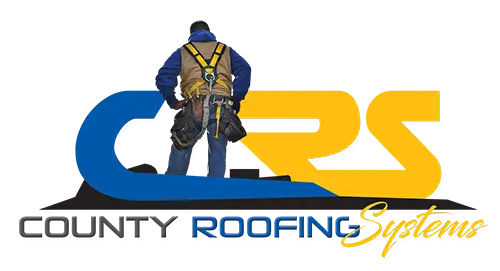Why Roof Flashing is Important for Long Island Homes
Over 35 Years as a Roofer in Long Island
When it comes to protecting your Long Island home from the elements, the roof is your first line of defense. However, one crucial component often goes unnoticed: roof flashing. This essential element plays a vital role in preventing water intrusion, which can lead to significant damage over time. In this comprehensive article, we’ll delve into what roof flashing is, explore the different types available, and discuss why proper installation is critical—particularly in the Long Island climate. We’ll also examine common issues that arise from improper flashing work and how to ensure your roofing project is executed with precision.
Understanding Roof Flashing
What is Roof Flashing?
Roof flashing is a thin material, typically made of metal, installed at various points on a roof to prevent water from seeping into structures. It’s placed at intersections and terminations where the roof meets other components, such as walls, chimneys, skylights, and vents. Flashing acts as a barrier, directing water away from these vulnerable areas and onto the roofing material, where it can safely drain off the roof.
Why is Roof Flashing Important?
While shingles or roofing tiles repel water on the larger surfaces, flashing seals the joints and edges where water could penetrate. Without proper flashing, even the most robust roofing materials can fail to protect your home adequately. Flashing ensures a watertight seal, safeguarding the underlying structures from moisture damage, mold growth, and structural deterioration.
Types of Roof Flashing
Understanding the different types of roof flashing can help homeowners make informed decisions when repairing or installing a roof. Each type serves a specific purpose and is designed to address unique roofing challenges. Here are some of the most commonly used types of flashing.
Step Flashing
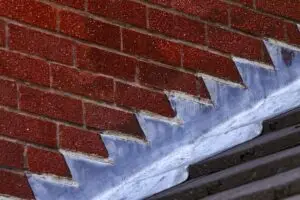
Roofers install step flashing where a sloped roof meets a vertical wall. It consists of rectangular pieces of flashing bent at a 90-degree angle in the center. Installed in layers with the roofing shingles, step flashing overlaps each shingle, providing continuous protection along the wall. This method ensures that water is directed away from the wall and onto the shingles.
Counter Flashing
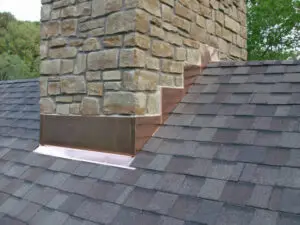
Counter flashing is installed opposite to or above base flashing, creating a two-part system. Commonly used around chimneys and walls, counter flashing overlaps base flashing to cover its top edge, providing an extra layer of protection against water intrusion.
Valley Flashing
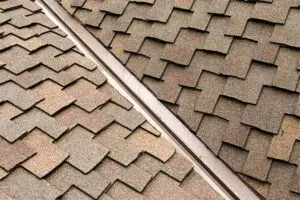
We apply valley flashing in the valleys where two roof planes meet. Shaped like a “V” or “W,” valley flashing channels water down the valley and off the roof, preventing it from seeping into the roofing materials.
Drip Edge Flashing
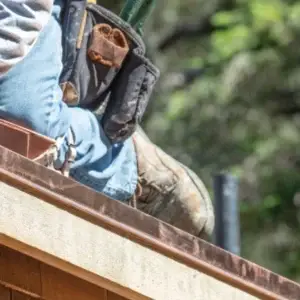
Drip edge flashing is installed along the roof’s edges. It directs water away from the fascia and into the gutters, preventing water from running down the exterior walls or behind the gutters, which can cause rot and damage.
Vent Pipe Flashing
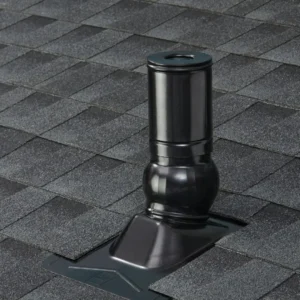
Also known as pipe boots, vent pipe flashing seals the area around roof penetrations like plumbing vents. Made of metal or rubber, roofers fit the flashing over the pipe and under the shingles to prevent water from entering around the pipe.
Skylight Flashing
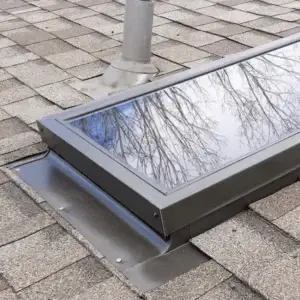
Skylight flashing is specifically designed for skylights. It forms a watertight seal around the skylight, preventing leaks where the skylight meets the roof.
Continuous Flashing

Also known as apron flashing, continuous flashing is a long, single piece of metal that carries water down to the shingles below. Used where a vertical surface meets a sloped roof, like at dormers, continuous flashing acts like an apron to catch and shed water.
The Importance of Roof Flashing
On Long Island Homes
Long Island's Challenging Weather Conditions
Long Island experiences a wide range of weather conditions, from hot, humid summers to cold, snowy winters. The region is also susceptible to heavy rainfall and coastal storms, including hurricanes and nor’easters. These factors make effective roof flashing particularly critical for Long Island homes.
Protecting Against Water Damage
Given the area’s precipitation levels, improper flashing can quickly lead to water intrusion. Moisture can cause wood rot, damage insulation, and promote mold growth, posing health risks to occupants and leading to costly repairs.
Roof Longevity
Properly installed flashing extends the life of a roof by preventing leaks that can deteriorate roofing materials and underlying structures. This is especially important in coastal areas where salt air can accelerate corrosion and material degradation.
Energy Efficiency
Water intrusion can compromise a home’s insulation, leading to increased energy costs. When your flashing is correctly installed and maintained, you preserve your home’s energy efficiency and lower your heating and cooling expenses.
Common Roof Flashing Issues
Roofing projects are often under tight schedules, and flashing installation can be time-consuming. Some contractors may rush through this step to meet deadlines, compromising quality. Flashing is a tedious task requiring specialized skills and knowledge. Not all roofing teams have that knowledge and so the job get done poorly.
The impact of improper flashing installation can be significant and long-lasting. Water infiltration can lead to leaks that damage ceilings, walls, and personal belongings. It also promotes mold and mildew, which can cause health issues like respiratory problems and allergies. Over time, persistent moisture can leave with a sagging roof and compromised support beams.
Here are some ways flashing work can go wrong.
Improper Installation Techniques
Incorrectly installed flashing can create gaps or overlaps that allow water to penetrate. This includes using the wrong type of flashing for a particular application or not following manufacturer guidelines.
Use of Inappropriate Materials
Choosing substandard or incompatible materials can lead to premature failure. For example, mixing metals like aluminum and copper can cause galvanic corrosion, compromising the flashing’s integrity.
Insufficient Fastening
Using too few fasteners or placing them incorrectly can cause flashing to loosen over time, especially under high winds common on Long Island.
Lack of Sealant
Failing to apply sealant where necessary can leave joints and edges vulnerable to leaks.
For the Best Roof Flashing,
You Need the Best Roofing Contractor

Fixing a poorly-done flashing job can be an expensive undertaking, especially if the leaks have already caused serious water damage. Choosing a trusted, experienced Long Island roofing contractor is crucial. Look for companies with positive reviews, proper licensing, and a solid track record in your community. Check to make sure they are properly licensed and insured. And insist on a detailed proposal listing all applicable costs for materials, labor, and other expenses.
County Roofing has been in business for over 35 years. We’ve handled roof flashing on many Long Island roofs and know exactly what it takes to protect your home. If you have flashing issues, we can fix those persistent leaks once and for all.
People Also Ask...
Roof flashing is a thin material, usually made from metal, used to direct water away from critical areas of the roof, such as joints, edges, and intersections, where leaks are more likely to occur. It is installed around features like chimneys, vents, skylights, and valleys. Flashing is essential because it prevents water from penetrating the roof structure, which could cause leaks, rot, and damage to the underlying materials.
Common materials used for roof flashing include aluminum, copper, galvanized steel, and stainless steel. Copper is highly durable and resistant to corrosion, making it ideal for long-term performance. Aluminum is lightweight and easy to work with, but it can corrode if not properly coated. Galvanized steel is more affordable but less durable than copper. Stainless steel offers excellent corrosion resistance and durability, especially in harsh climates like those found on Long Island.
Flashing is installed in areas where two different roofing surfaces meet or where there are roof penetrations. This includes areas around chimneys, vents, skylights, valleys (where two roof planes meet), roof edges, and where a roof meets a wall or dormer. These areas are vulnerable to water penetration, making flashing crucial to protect the roof from leaks.
Roof flashing should be inspected at least once a year, ideally during your regular roof maintenance check-up. It's also important to inspect the flashing after severe weather events, such as heavy rain, high winds, or snowstorms, which can cause flashing to loosen or become damaged. Regular inspections can help identify potential problems early, preventing costly water damage and repairs.
Signs that your flashing may need repair or replacement include visible rust or corrosion, cracks in the flashing, loose or missing flashing pieces, water stains on ceilings or walls, and leaks around chimneys, vents, or skylights. If you notice any of these issues, it's important to have your flashing repaired or replaced promptly to avoid further damage.
In many cases, flashing can be repaired if the damage is minor, such as small cracks or a loose section. However, if the flashing is severely corroded, damaged, or improperly installed, it may need to be replaced entirely. It's essential to consult with a roofing professional to assess the situation and determine the best course of action.
Improper flashing installation is common because flashing requires precise techniques and knowledge to install correctly. Some contractors may cut corners to save time or reduce costs, using inadequate materials or not following proper installation guidelines. Poor workmanship, such as insufficient sealing or incorrect fastening, can result in leaks and water damage. Hiring an experienced and reputable contractor is key to ensuring proper installation.
Yes, improper flashing is one of the most common causes of roof leaks. If flashing is not installed correctly, is damaged, or is made from substandard materials, water can easily seep into the roof. This can lead to leaks, water damage, and potentially costly repairs. Ensuring that flashing is properly installed is crucial for preventing these issues.
In over 3 decades of contracting work on Long Island, we’ve worked with many local home equity lenders. Give us a call and we can help you make your old house look like a brand new home.

